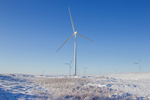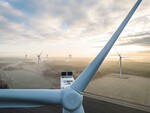Analysis: IRA-Related Clean Energy Projects To Create 403,000 Direct & Indirect Jobs; Add Billions To GDP
Large-scale clean energy projects announced in the first year of the Inflation Reduction Act (IRA) are estimated to create more than 400,000 new jobs and hundreds of billions of dollars in new wages, tax revenues, and economic growth, according to a first-of-its kind economic analysis produced by BW Research Partnership and released by the national nonpartisan business group E2 today.
Clean Economy Works: An Economic Impact Analysis of Major Clean Energy Projects Announced In Year One of the Inflation Reduction Act modeled the economic benefits of the 210 clean energy and electric vehicle factories and other projects announced across 38 states that were tracked by E2 from August 2022 to August 2023. It found that if all the projects are completed, they would:
- Create or support 303,500 jobs during the construction phase and 99,600 jobs after the projects are up and running;
- Add $156 billion to the US GDP during construction and $13 billion annually to the GDP over their operational lifetime;
- Generate $32.5 billion in federal, state, and local tax revenues during the construction phase and another $2.9 billion annually after they’re up and running;
- Add $111 billion in wages during construction and another $8.4 billion annually during operation.
E2 Executive Director Bob Keefe said: “This is another indication that we’re witnessing one of the biggest and most far-reaching economic revolutions in generations, thanks to the IRA. What this study shows is that this boom extends beyond clean energy and clean vehicles and to everything from construction to restaurants to retailers to real estate.
“Even if you don’t care about climate change, even if you don’t like clean energy or electric vehicles, you ought to like the jobs, investments, sales and tax dollars coming to your state and your community because of this clean economy transformation.”
The study is the first to analyze the direct, indirect, and induced jobs and benefits created by these historic investments. It shows that while the construction industry and its supply chain will see the biggest benefits, other sectors ranging from healthcare and hospitality to retail trade and real estate will also benefit greatly.
Further, these projects are expected to generate $32.5 billion in tax revenues while under construction, and another $2.9 billion in tax revenues generated annually once they’re open. Those tax revenues could help states and local governments pay for everything from new schools and sewer lines and help put more teachers in classrooms and more cops on the beat.
Cai Steger director of policy research at BW Research said: “This report shows that the economic benefits of this surge of recently announced clean energy projects are not only far-reaching but will last long after they’re built. When new clean energy facilities and hundreds of new jobs come to a community, they pay employee salaries and feed a growing local supply chain – benefitting everyone from local restaurants and small businesses to the public schools and fire departments that benefit from higher tax revenues.”
According to the modeling, electric vehicle (EV) projects are leading the clean economy boom, accounting for 185,7000 jobs and adding $18.5 billion to the U.S. GDP every year for five years during construction. The battery storage sector was second with 48,800 jobs and $5 billion added to the GDP followed by solar energy with 35,000 jobs and $3.6 billion added to the GDP.
Once up and running, the EV projects alone are expected to support nearly 55,000 jobs and add $7 billion to the economy every year for the life of the projects. The battery storage sector was second with 13,600 jobs and $1.8 billion added, followed by solar energy with 12,100 jobs and $1.8 billion added every year.
Southeast states and Republican congressional districts are likely to benefit the most, based on projects locations. Of the 210 clean energy projects tracked by E2 from August 2022-August 2023, nearly 80 are in the Southeast. Fully 18 of the top 20 congressional districts for announced clean energy investments are districts represented by Republicans, all of whom voted against the IRA. Seven states are home to 10 or more projects—including Georgia, South Carolina, Michigan, Ohio, Tennessee, Texas, and New York—and eight states are home to at least five projects.
A full list of the projects tracked in the first year of the IRA can be found in the report and here, and more details and projects announced since then can be found here.
- Source:
- E2
- Author:
- Press Office
- Link:
- e2.org/...
- Keywords:
- IRA, USA, E2, billion, GDP, study, jobs, Inflation Reduction Act, clean economy, electric vehicle, renewable energy

























